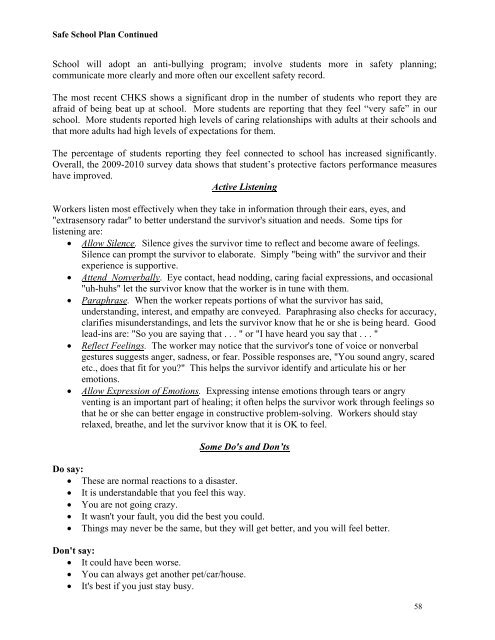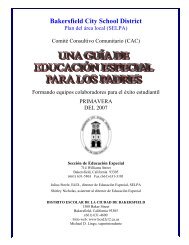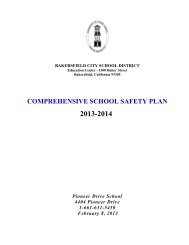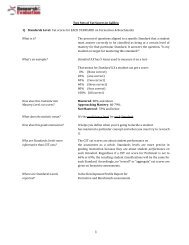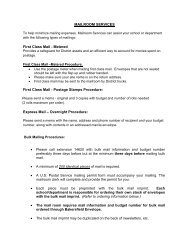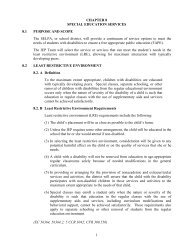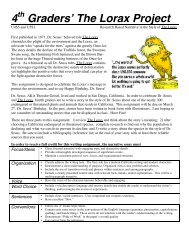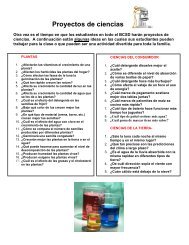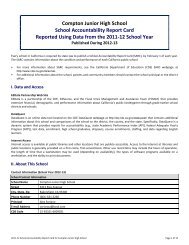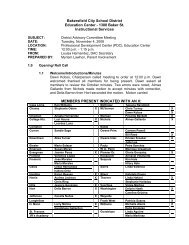Thorner - BCSD Static Server - Bakersfield City School District
Thorner - BCSD Static Server - Bakersfield City School District
Thorner - BCSD Static Server - Bakersfield City School District
You also want an ePaper? Increase the reach of your titles
YUMPU automatically turns print PDFs into web optimized ePapers that Google loves.
Safe <strong>School</strong> Plan Continued<strong>School</strong> will adopt an anti-bullying program; involve students more in safety planning;communicate more clearly and more often our excellent safety record.The most recent CHKS shows a significant drop in the number of students who report they areafraid of being beat up at school. More students are reporting that they feel “very safe” in ourschool. More students reported high levels of caring relationships with adults at their schools andthat more adults had high levels of expectations for them.The percentage of students reporting they feel connected to school has increased significantly.Overall, the 2009-2010 survey data shows that student’s protective factors performance measureshave improved.Active ListeningWorkers listen most effectively when they take in information through their ears, eyes, and"extrasensory radar" to better understand the survivor's situation and needs. Some tips forlistening are: Allow Silence. Silence gives the survivor time to reflect and become aware of feelings.Silence can prompt the survivor to elaborate. Simply "being with" the survivor and theirexperience is supportive. Attend Nonverbally. Eye contact, head nodding, caring facial expressions, and occasional"uh-huhs" let the survivor know that the worker is in tune with them. Paraphrase. When the worker repeats portions of what the survivor has said,understanding, interest, and empathy are conveyed. Paraphrasing also checks for accuracy,clarifies misunderstandings, and lets the survivor know that he or she is being heard. Goodlead-ins are: "So you are saying that . . . " or "I have heard you say that . . . " Reflect Feelings. The worker may notice that the survivor's tone of voice or nonverbalgestures suggests anger, sadness, or fear. Possible responses are, "You sound angry, scaredetc., does that fit for you?" This helps the survivor identify and articulate his or heremotions. Allow Expression of Emotions. Expressing intense emotions through tears or angryventing is an important part of healing; it often helps the survivor work through feelings sothat he or she can better engage in constructive problem-solving. Workers should stayrelaxed, breathe, and let the survivor know that it is OK to feel.Some Do's and Don’tsDo say: These are normal reactions to a disaster. It is understandable that you feel this way. You are not going crazy. It wasn't your fault, you did the best you could. Things may never be the same, but they will get better, and you will feel better.Don't say: It could have been worse. You can always get another pet/car/house. It's best if you just stay busy.58


